Sago Palm: Tree Care and Growing Instructions
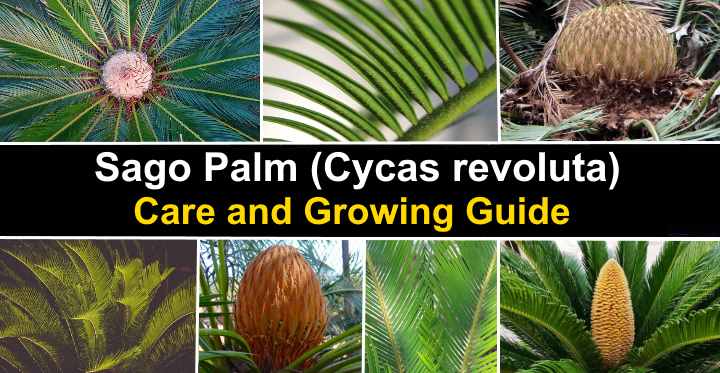
Sago palms (Cycas revoluta) are evergreen, slow-growing tropical plants with long arching green palm-like fronds or branches. Sago palms have a thick shaggy or hairy looking trunk. Sago palms are not true palm trees, but rather a type of ornamental cycad. Easy-to-grow sago palms are also called king sago, cycad palm, sago cycad, or Japanese sago palm.
Sago palms are cold-hardy popular landscape plants for tropical gardens. King sago palms grow best in full sun, well-draining soil, and are drought-tolerant.
Sago palms are slow growing plants and in ideal growing conditions they can reach heights of 12 ft. (3.5 m) after 50 years. It takes 10 years for sago palms to reach maturity and flower for the first time.
This article is a complete guide to growing sago palms in your garden or indoors. You’ll also find out interesting facts about this cycad that many people confuse for a small palm tree.
Sago Palm (Cycas revoluta) is a Cycad Plant (Not a Real Palm Tree)
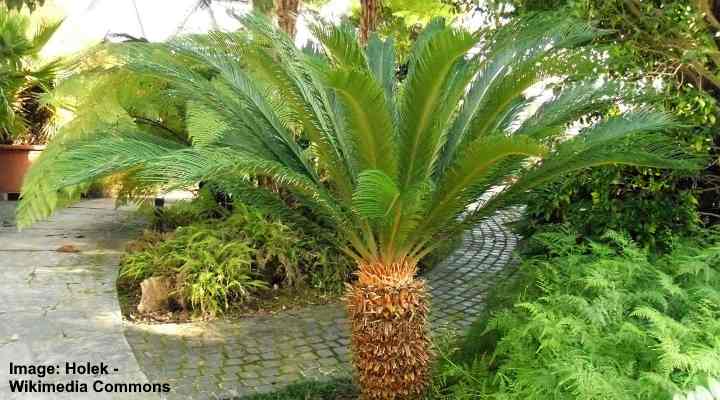
Sago palm (king sago) tree is not a true palm but a cycad plant
Sago palms (Cycas revoluta) are not true palm trees – these spiky-looking plants are actually cycads in the family Cycadaceae. Palm trees belong to a completely different plant family called Arecaceae.
Although sago cycads look like palm trees, there are some differences between cycad palms and real palm trees. Unlike palm trees, sago palms don’t have seeds that are enclosed in fruits. Female sago palm produces seeds from a main flower head that looks like a cone. Unlike real palms, when the leaves of sago palms emerge they are curled and look like fern leaves rather than palm leaves.
A Few Facts About Sago Palms
King sago palms (Cycas revoluta) have a thick shaggy trunk and stiff arching green glossy fronds. Sago palms are perennial plants with evergreen foliage.
Sometimes king sago plants grow as multi-stemmed ‘palms’ with spiky crowns of leaves on each trunk.
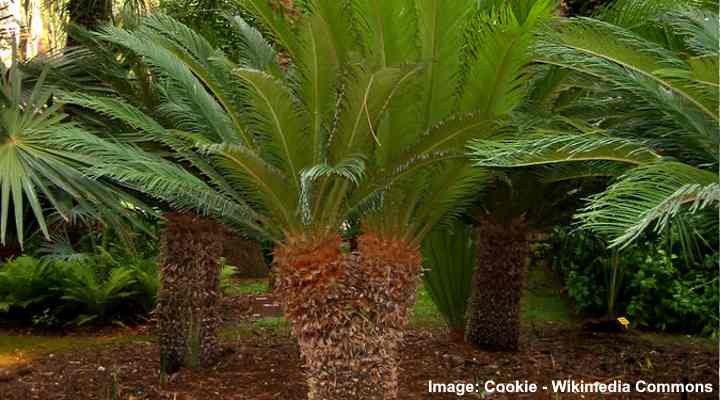
Two stemmed sago palm
As cycad palms grow, suckers or pups grow around the trunk. These tree offsets can grow as a new ‘palm’ next to the tree. Or you can remove the pups to plant new sago palms.
Sago palms also grow indoors to add a tropical touch to your interiors. The slow-growing houseplant can grow up to 6 ft. (1.8 m) if it gets enough sunlight.
Sago palms are popular bonsai plants. The sago palm bonsai looks like a miniature version of the full-size palm tree. The small palms grow to between 6” and 12” (15 – 30 cm) high. Sago cycad bonsai palms need plenty of sunlight to grow well.
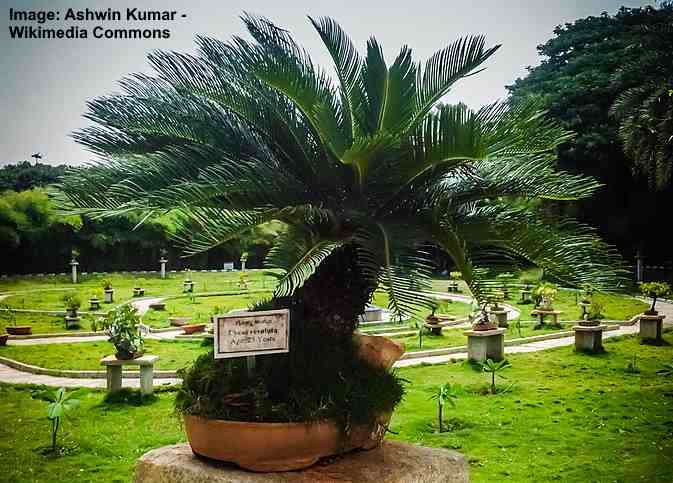
25 year-old bonsai sago palm
Sago cycads are also on the list of toxic plants. All parts of sago palms are poisonous, especially the seeds. King sago palms are so toxic that ingesting the plant can be fatal for pets. Consuming parts of sago palms can cause severe gastrointestinal complaints in humans.
Sago Palm Seeds
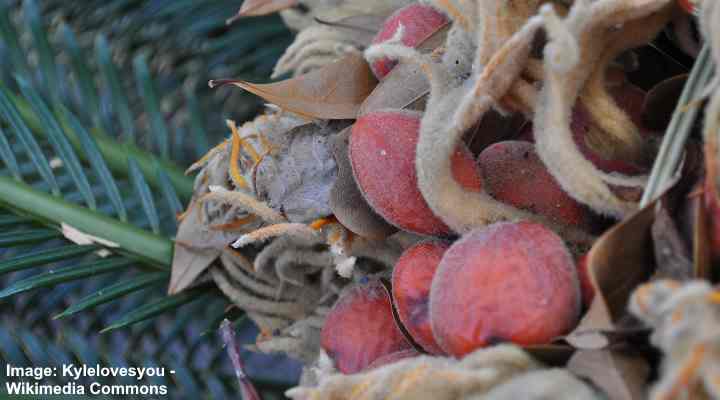
Close-up of the seeds of a sago cycad palm. The seeds are poisonous and very harmful to pets
Sago palms reproduce through seeds that grow in cones in the middle of the leaf mass. You can plant sago palm seeds flat down on their side in soil, with one-third of the seed exposed. Remember that the sago palm seeds are poisonous and should be kept away from children or pets.
Male Sago Vs. Female Sago Palm
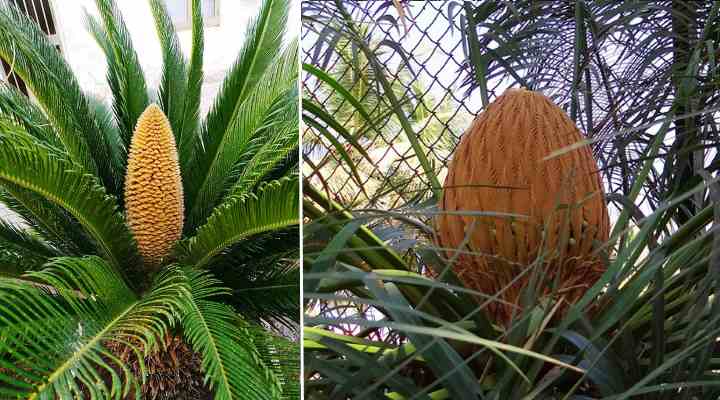
Male sago palm (left) and female sago palm (right)
Sago palms are dioecious which means that male and female sago palms are required for reproduction. Mature male sago plants have an upright cone-type structure that grows in the middle of the leaf rosette. The female sago has a sizeable rounded cone that contains many orange seeds. The female sago palms need to be pollinated for the sago seeds to reproduce.
Sago palm cones are sometimes called flowers. However, because sago plants are cycads, not palms, they don’t produce flowers. These flower-like sago plant cones ‘bloom’ every three or four years—but only when the tree is at least 15 years old.
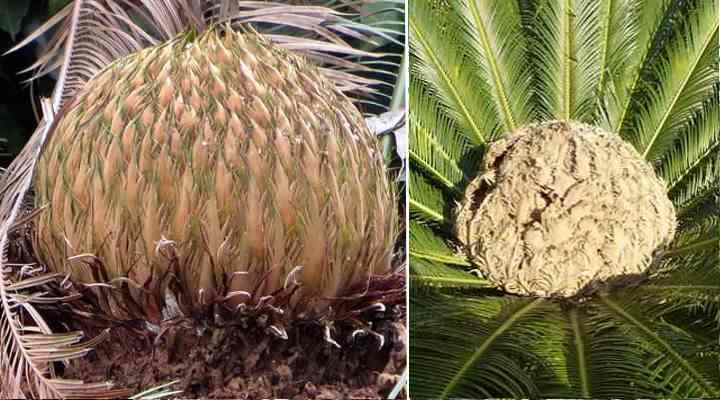
More examples of female sago palm
King Sago Vs. Queen Sago Palm
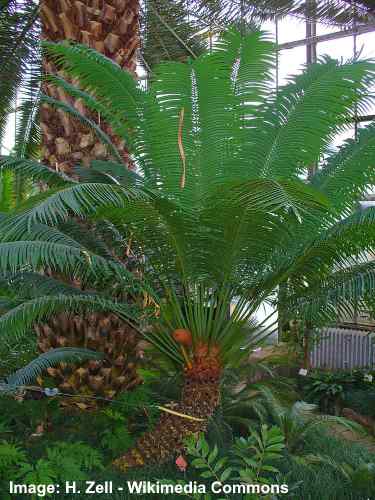
Queen sago palm (Cycas circinalis) is either male or female – like the king sago (Cycas revoluta)
The king sago palm (Cycas revoluta) is different from the queen sago palm (Cycas circinalis). The king sago is native to Japan and is sometimes called the Japanese sago. The queen sago is native to southern India and Sri Lanka but is also a popular landscape plant in Hawaii.
Both species of these cycads are grown for their ornamental value in tropical garden landscapes.
How to Care for Sago Palms
Easy-care sago palms grow effortlessly if you’ve got the right growing conditions. For sago palms to thrive, grow them in full sun, sandy well-draining soil, and only water when the ground is dry. Sago palms don’t require fertilizers, but you can provide light fertilization monthly during the growing season.
Here is the complete guide to growing sago palms.
Sago Palm Light Requirements
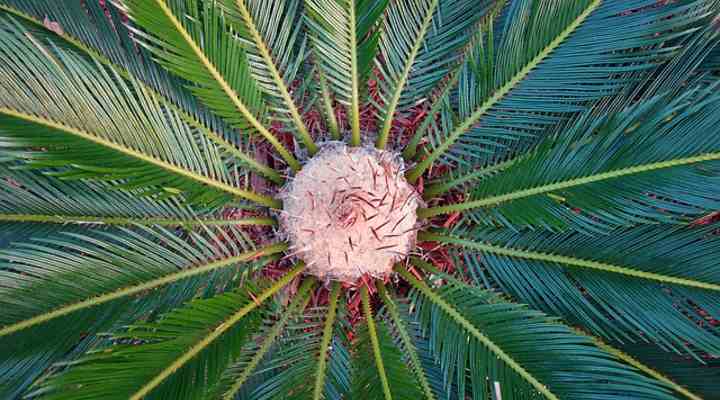
When growing king sago palm indoors, place it in a sunny location away from direct sunlight
Sago palms grow in full sun to partial shade. Ideally, the king sago cycad needs four to six hours of sunlight daily to keep its foliage lush and healthy. In hot, arid climates, the best location for sago palms is in partial shade protected from the hot midday sun.
Growing outdoors in sunny locations, make sure there is at least 3 ft. space (1 m) between the palm-like plants. This ensures that there’s enough airflow around the plant. Also, all the palm’s foliage will get enough sunlight for healthy growth.
Protect sago palms from direct sunlight when growing in pots indoors. The sago palm pot should be in a sunny location in your home. You should avoid placing cycads at a south-facing window as direct sunlight all day can burn the leaves and cause them to be yellow.
The Best Soil for Growing Sago Palms
King sago palms grow best in loamy, slightly acidic, well-draining soil. The ideal type of soil mix for cycad palms is sandy soil that has some organic matter worked into it. For healthy sago palm growth, the most critical soil factor is excellent drainage.
The worst thing for sago palms is for their roots to stand in wet, soggy soil. After a thorough watering, the excess water should drain away quickly. This gives roots plenty of hydration without becoming too damp.
Ensure you have the appropriate potting soil mix if you grow potted sago palms indoors or outside. A combination of one part perlite, one part coarse sand, and two parts peat moss is an ideal potting mix. The peat moss adds nutrients and retains some moisture, while sand and perlite improve drainage.
How to Water a Sago Palm

Sago palms don’t need much water so only water them when the top soil is dry
Sago cycads don’t require much water. Sago palms are drought-tolerant outdoor plants and survive long periods without water. If your climate gets at least 9” (22 cm) of yearly rainfall, you might never need to water your cycad. In hot, dry weather, water the sago plant thoroughly every two weeks.
Sago palms thrive on the regular rainfall in tropical and semi-tropical climates. As long as water drains quickly from the sago palms’ roots, the cycad will grow well. Many gardeners never need to water sago palms growing in the backyard.
To water potted sago palms, follow the guide for watering houseplants. Only water sago palms in pots when the top 3” (7.6 cm) of the potting mix is dry. Thoroughly water the soil until water drains out the drainage holes in the pot’s base. Wait until the soil mix dries again before watering.
Don’t water sago palms during winter.
Temperature and Humidity Requirements for Sago Palms
The ideal temperature range for sago palms is between 70°F and 90°F (21°C – 32°C). The minimum temperature for Cycas revoluta is 20°F (-6°C). Although sago palms can survive short periods of frost, the lush green foliage may suffer some damage.
Sago palms thrive in USDA zones 9 – 12.
If you live in colder climates, you can grow sago palms outdoors in pots during the summer. When the nighttime temperature drops to 50°F (10°C), it’s best to bring the potted cycad indoors. Sometimes, the large feathery fronds can get damaged in temperatures below 30°F (-1°C).
Sago palms need above average humidity to thrive. Southern states such as Florida have the ideal climate for growing sago palm trees.
If you have a potted king sago or bonsai sago indoors, mist the leaves regularly to increase humidity. Also, keep the cycad plant away from cold drafts to prevent leaf damage.
Sago Palm Fertilizer Needs
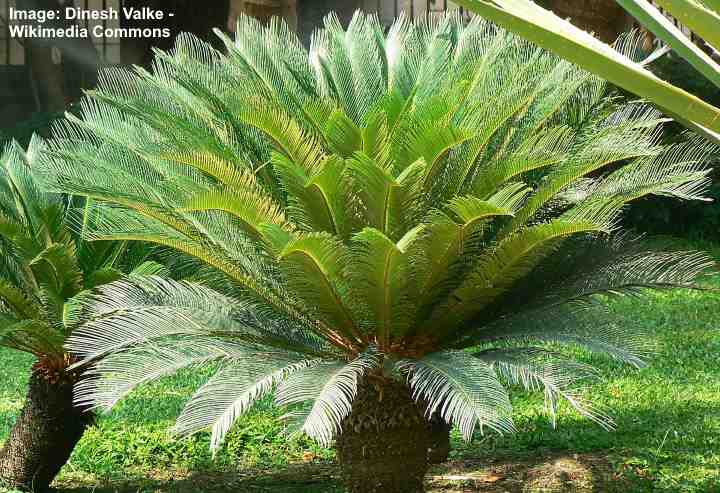
King sago palms have minimal fertilizing needs
Sago palms have few, if any, fertilizing needs. Many gardeners say that their sago palms grow fine without additional fertilization. Growing in rich, well-drained soil ensures that sago palms get enough nutrients for healthy growth.
If you decide to boost the soil’s nutrient profile, you can use a liquid fertilizer with an NPK rating of 18-8-18. Mix the fertilizer according to the manufacturer’s instructions and apply once a month during the growing season. Citrus or palm fertilizers are also suitable for cycads.
Sago palms—just like all cycads and palms—need magnesium. You should choose a good fertilizer with added magnesium. Alternatively, you can also use Epsom salt to add magnesium. You could sprinkle a tablespoon of Epsom salt around the trunk twice a year before watering the ground.
Sago Palm Growth Rate
King sago palms are slow growers. Sago palms take ten years or longer to reach maturity and get to their average height of 5 ft. (1.5 m). After about 50 years, sago palms grow up to 10 or 12 ft. (3 – 3.6 m). Sago palms live up to 100 years.
How to Propagate Sago Palms
Sago pups or sago palm seeds are the two methods used to propagate the plant. Both male and female sago palms produce pups that you can separate from the base and replant. Sago palm propagation by seed is trickier. Both propagation methods take a long time for new plants to grow.
Here is how to propagate sago palms using pups or offsets:
- Look for small offsets around the base of a mature sago palm and carefully remove them to get the entire stem
- If you can’t pull out the offset, use a sharp saw to separate the pup from the plant.
- Rinse the cut end of the sago palm pup and remove any roots.
- Leave the pup in a shaded spot for seven days until the wounded end has callused.
- Plant the sago palm cutting in a pot or a suitable location in your backyard.
- Water thoroughly to encourage growth.
Propagating sago palms from seeds is a challenging process. First, you need to have a male and female sago palm growing in your yard. Then you need to ensure that seeds have been pollinated. If sago seeds are pollinated, they can take up to six months before they begin to show any roots.
How to Prune (Trim) Sago Palm
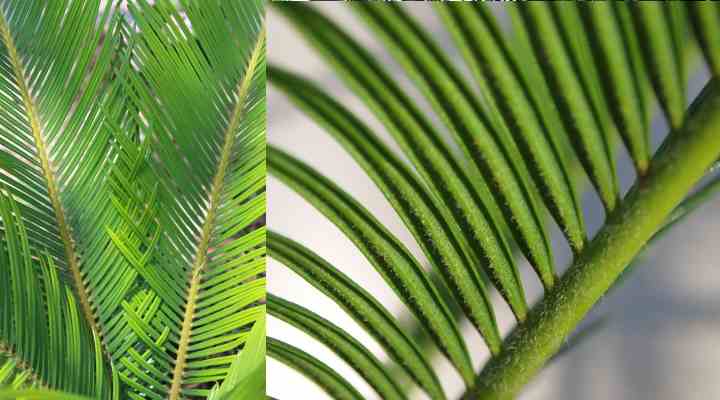
Only remove sago palm leaves that are dead or diseased as overly trimming cycad plant causes it stress
Only prune or trim sago palm leaves that are dead, diseased, or damaged. Overly pruning a sago palm can weaken the plant’s growth. You can also remove the sago palm flowers (cones) after ‘blooming’ to promote growth.
Here is how to prune or trim a sago palm:
- Put on protective gloves to avoid the spiky sago palm leaves jabbing you.
- Use sanitized pruning shears to prevent spreading disease.
- Look for brown sago palm leaves that appear dead.
- Trim the dead king sago leaves as close as you can to the base.
- Never trim yellow fronds or leaves as doing so can stress the plant too much.
Sago Palm Toxicity
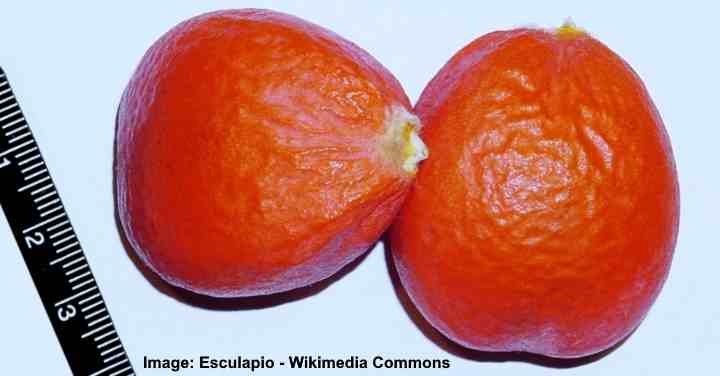
All parts of sago palm are toxic to humans and especially for pets, with the seeds containing the most poisonous substance
All parts of sago palms contain toxins and should never be ingested. Sago palms have a toxic substance called cycasin. This poison is in higher concentrations in the sago palm seeds. However, dogs or cats that eat any part of the sago palm can suffer from liver damage.
The journal Frontiers in Veterinary Science reported on the dangers of sago palms to dogs and cats. Scientists say that toxins are in the plant’s leaves, stems, roots, and seeds. Sago palm seeds contain the highest concentration of cycasin. Ingesting one or two seeds can be fatal to animals.
Sago palm poisoning can lead to severe consequences.
Symptoms of pets consuming parts of the sago plant include the following:
- Gastrointestinal upset such as drooling, vomiting, and diarrhea.
- Nose bleeds or gum bleeds.
- Lethargy.
- Abdominal pain.
- Increased thirst and urination.
- Bruising.
King sago palm seeds, leaves, and stems are also toxic to humans. Medical reports say that ingesting cycad seeds can result in severe gastrointestinal problems. The most common issue associated with sago palm poisoning was severe vomiting.
Pests that Can Affect Sago Palm Growth
Sago palms are hardy plants that are not susceptible to pests and disease. If growing in a suitable location, you will rarely have to treat a sago palm for pest problems. Spider mites and scale insects are the only bugs that could become problematic.
Please read this article to learn how to deal with many plant pests naturally.
Sago Palm with Yellow Fronds
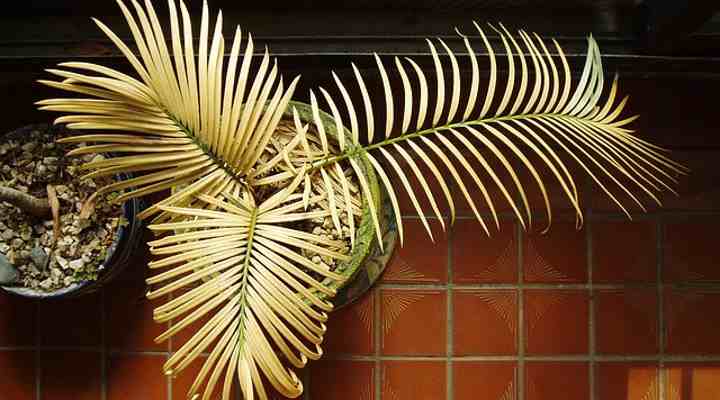
Yellowing leaves of sago palm are usually caused by nutrient deficiency or the soil being to dry/damp
A nutrient deficiency usually causes yellow fronds on a sago palm. A lack of potassium, magnesium, or nitrogen can result in the lush, spiky palm leaves losing their color. Other causes of yellow fronds on sago palms can be overly dry or overly damp soil.
Here are some handy tips to know which nutrient deficiency is causing yellow sago palm fronds:
- Nitrogen deficiency—Older sago leaves turn yellow.
- Potassium deficiency—The leaves and stems become yellow.
- Magnesium deficiency—Yellow bands appear on leaves, but the central leaf stays green.
Use a liquid fertilizer for palm trees to resolve issues of yellowing sago palm leaves. New growth should then start to appear green. However, it would be best if you avoid pruning yellow leaves and only chop them off when they become brown.
Related articles:
